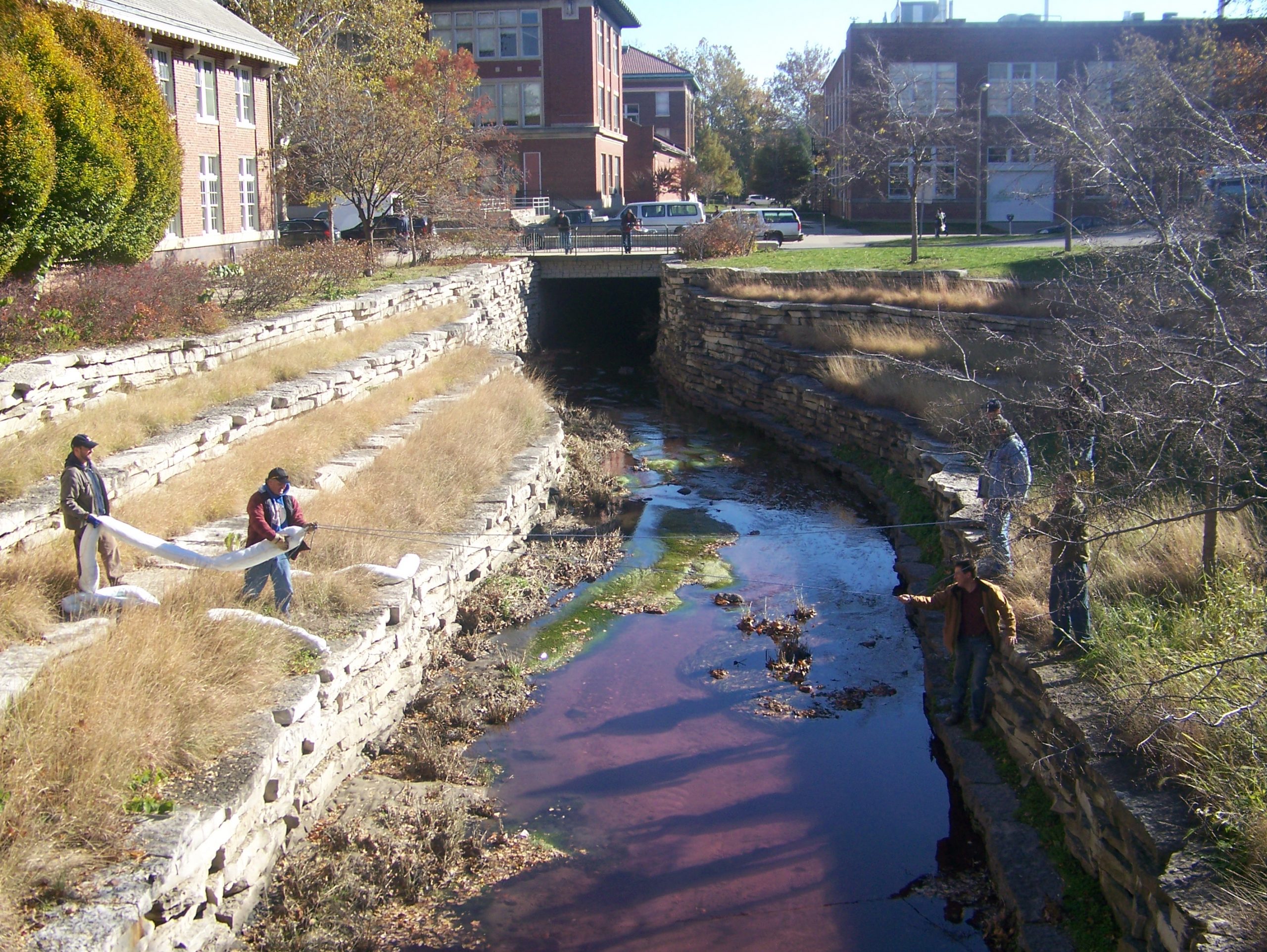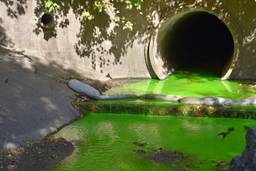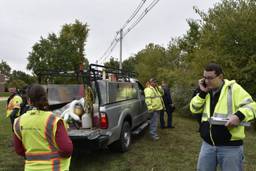Pollution Prevention

Pollution can result from a variety of campus activities such as fuel handling and pesticide management. Here you can find information about hazardous substances on campus, learn what the university is doing to prevent accidental releases, and discover what actions must be taken when contamination has occurred.
Note: Hazardous waste is managed by the Division of Research Safety, Chemical Safety Section.
Community Right to Know regulations allow citizens to learn about the presence and quantity of hazardous substances in their community. Although the university is not subject to this requirement, Environmental Compliance provides this information to emergency planning officials and the public in the spirit of emergency planning and community disclosure. Contact the Division of Safety and Compliance if you would like a copy of the most recent inventory.
Accidents happen! If you witness an environmental spill, contact emergency personnel promptly. Environmental Compliance maintains a reporting protocol that outlines the procedures to be followed in the event of a release. The protocol is for general use by university students and staff. This Standard Operating Procedure provides directions to follow if a suspect substance is released or discovered.
Report a Spill
If a release is LIFE THREATENING, dial 911.
If a release is NON-LIFE THREATENING, call the Service Office (217) 333-0340.
After hours, press 0 to be redirected to Public Safety.
Give the following information if it can be obtained safely:
- Location of the release (facility address and phone number)
- Date and time of the release
- Type of substance released
- Source of the release
- Spill location (inside building or outside building)
- Estimate total quantity released
- Estimate quantity that entered a storm sewer, sanitary sewer, Boneyard Creek, or Embarras River
- Cause of the release
- Damages or injuries caused by the release
- Actions used to stop, control or mitigate the effects of the release
- Whether any life is threatened by the release
- Other persons who have been contacted
Spill Response Images
If you think you see a spill, call:
Life-threatening: 911
Non life-threatnening: F&S Service Office 217-333-0340.
Properly storing and disposing of materials greatly reduces the potential for environmental contamination.
The following is a list of recommendations for storing and disposing of materials in order to prevent environmental contamination and container deterioration, both of which can result in expensive clean-up costs.
- All containers (drums, pails, boxes, etc.) should be closed when not in use.
- All containers should be stored off the ground and under cover to protect them from the rain.
- All liquid chemicals and petroleum products should be stored with secondary containment. Pursuant to the Environmental Protection Agency’s Oil Pollution Prevention Regulation, 40 CFR 112.7 (c), all 55-gallon or larger containers of petroleum products must be on secondary spill containment (110% capacity) if being stored outside or inside with the potential to reach navigable waters. Pallets that provide 110% containment are available through a number of safety vendors.
- Drums that contain solid materials (lime, dry fly ash, etc.) should be stored on wooden pallets to protect the base of the container from moisture.
- The type of cover can vary from a permanent roofed structure, anchored plastic tarps or any other means that protects the container tops and sides from exposure. Managing deteriorated containers is very difficult in terms of moving and disposal.
- All drums/containers must have a legible content label. The label should be easily understood and visible to the public. Labels that are illegible must be replaced with new ones.
- Contact the Division of Research Safety at 217-333-2755 prior to providing any materials to a non-university location.
- Contact the Division of Research Safety at 217-333-2755 prior to disposing any materials.
The university prevents pollution from pesticide operations by using a containment area for washing or rinsing pesticide residues from vehicles, application equipment, mixing equipment, or other items used for the application of pesticides to lawns.
Contaminated land must be cleaned up. There are a number of laws that require remediation. The main objective is to clean up hazardous substances at sites that present an imminent and substantial threat to human health and the environment.
The Illinois Environmental Protection Agency’s (EPA) Site Remediation Program provides more information.
The Facts
When an uncontrolled release of hazardous and/or petroleum substances occurs into the environment, the responsible party must conduct remediation activities pursuant to federal and state cleanup programs — primarily the Resource Conservation and Recovery Act (RCRA), the Comprehensive Environmental Response, Compensation, and Liability Act (CERCLA), the Leaking Underground Storage Tank (LUST) program or the Tiered Approach to Corrective Actions (TACO) site remediation program (SRP). The main objective of these programs is to clean up hazardous substances at sites that present an imminent and substantial threat to human health and the environment.
The SRP cleanup program provides Remediation Applicants (i.e., any persons seeking to perform investigative or remedial activities) the opportunity to receive Illinois EPA review, technical assistance and no further remediation determinations from the Illinois EPA. This program is designed to be flexible and responsive to the needs of the Remediation Applicants. The goals and scope of actions at these sites are normally defined by the Remediation Applicants.
The Illinois EPA is authorized to issue No Further Remediation (NFR) letters to the Remedial Applicants who have successfully demonstrated, through proper investigation and, when warranted, remedial action, that environmental conditions at their remediation site do not present a significant risk to human health or the environment. The NFR letter signifies a release from further responsibilities under the Illinois Environmental Protection Act. This program’s activities are paid by the parties requesting the Illinois EPA’s oversight.
Federal law requires facilities that manages or stores over 42,000 gallons of buried storage or over 1,320 gallons aboveground storage to develop and implement a SPCC plan. Only containers/equipment that are 55 gallons or greater are included in the total.
The SPCC Plan is a written commitment of everything University units will do to prevent and clean up oil/fuel spills to water. SPCC Plans contain standard operating procedures to protect drains, streams and land that collect storm runoff from our campus, as well as annual training requirements and tank inspections.
If you have any questions about the University SPCC plans, need copies of Standard Operating Procedures, have changes to your oil and fuel storage tanks, or need to register for training, please contact the Department of Environmental Compliance at 217-265-9828.
The campus maintains numerous permitted Aboveground Storage Tanks (ASTs) and Underground Storage Tanks (USTs) that contain petroleum products and volatile oils. Contact Environmental Compliance before conducting any work on a campus storage tank.


